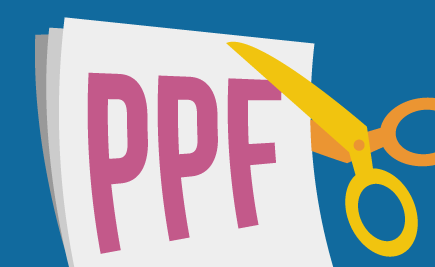
The interest rates on small Saving Schemes have dropped in the recent past, with the Public Provident Fund (PPF) witnessing the biggest drop in interest rates in the last 40 years. The National Saving Certificates (NSC) and Kisan Vikas Patra (KVP) too saw a drop in their returns, in line with rate cuts on all small savings schemes. In the most recent cut, the rates were slashed by 10 basis points, bringing down the PPF interest rate to 7.9%.
Previous PPF Interest Rates
PPF has been a much-loved investment avenue for millions of Indians since its launch in 1968. It has an EEE (Exempt-Exempt-Exempt) model of taxation and provides high returns compared to several other small savings avenues. Deposits made towards your PPF account can be used as tax deductions up to Rs.1.5 lakh under Section 80C. Your investment and your returns under PPF are completely tax-free.
Prior to 2016, the PPF rates were fixed annually by the government. However, from April 2016, the PPF rates are revised every quarter based on the yields of government securities with a mark-up of 25 basis points. At present, the interest rate is 7.9%, but it still remains the best debt instrument for investors in the general category. Irrespective of the interest rates, PPF has been out-performing G-Sec yields.
PPF Rates have been more-or-less stable since 1986.
- It was at 12% for 14 years from 1986 to 2000.
- It came down to 11% between 2000 and 2001
- It went to 9.5% between 2001 and 2002
- Dropped to 9% between 2002 and 2003
This was way above the 10-year G-sec, which was around 7% and volatile - From 2003 to 2011, the interest rate was at 8%
- It was revised to 8.6% between 2011 and 2012
- Between 2012 and 2013, it was at 8.8%
- The rate was steady at 8.7% for a period of three years between 2013 and 2016
- From April 2017, the rates have been reduced to 7.9%, an all-time low in the last 40 years
What Should You Do?
With the 10-year G-Sec from December to February at 6.52 and a mark-up of 25 bps, the PPF interest rate has now been reduced to 7.9% and there is room for further reduction.
However, the fall in the interest rates should not worry you, as the return is higher than that of other debt instruments and it’s a good addition to the portfolio.
This 15-year-long investment avenue ensures your money is locked in for meeting long-term goals such as post-retirement needs. If you need debt exposure, PPF remains one of your best long-term investment options.
However, if you wish to earn higher returns from long-term tax-saving instruments, you may explore such options as Equity Linked Tax Savings Scheme (ELSS) funds.
ELSS funds allow you to claim up to Rs. 1.5 lakh in tax deductions under 80C. According to the CRISIL – AMFI ELSS Fund Performance Index in December 2016, ELSS funds as a Mutual Fund category have returned 3.35% in the previous year, 16.64% in three years, 17.71% in the last five and 10.61% in 10 years.
